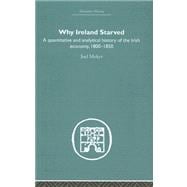
Note: Supplemental materials are not guaranteed with Rental or Used book purchases.
Purchase Benefits
What is included with this book?
| Acknowledgements | p. ix |
| Introduction | p. 1 |
| A Poverty-Stricken Economy? | p. 6 |
| The Problem of Population: Was Malthus Right? | p. 30 |
| Land, Leases, and Length of Tenure | p. 81 |
| The Economics of Rural Conflict and Unrest | p. 112 |
| The Problem of Wealth | p. 151 |
| The Human Factor: Entrepreneurship and Labor | p. 197 |
| Emigration and the Prefamine Economy | p. 230 |
| The Great Famine: the Economics of Vulnerability | p. 261 |
| Explaining Irish Poverty | p. 278 |
| Bibliography | p. 295 |
| Index | p. 317 |
| Table of Contents provided by Ingram. All Rights Reserved. |
The New copy of this book will include any supplemental materials advertised. Please check the title of the book to determine if it should include any access cards, study guides, lab manuals, CDs, etc.
The Used, Rental and eBook copies of this book are not guaranteed to include any supplemental materials. Typically, only the book itself is included. This is true even if the title states it includes any access cards, study guides, lab manuals, CDs, etc.